|
Author
|
Topic: The Last Days of Pompeii (1959)
|
Laksmi Breathwaite
Jedi Master Film Handler

Posts: 771
From: Las Vegas
Registered: Nov 2010
|
 posted October 08, 2013 11:10 PM
posted October 08, 2013 11:10 PM



Returning to Pompeii after a spell in Palestine, the Roman centurion Glaucus (Steve Reeves) travels to his father's house, but discovers that it has been looted and his father murdered but a band of Christian Outlaws. During a city-wide festival, Glaucus takes out his anger by getting drunk and arrives at the city palace where he fights with one of the Praetorian Guards. Meanwhile one of Glacus' friends discovers a mask, identical to that worn by the Christian killers in the pocket of a drunk Roman soldier, but when another friend follow the soldier to see who he is working for, he winds up dead...Although listing Edward George Bulwer-Lytton in the opening credits, this Italian production of the Pompeii story bears only a passing resemblance to the English author's The Last Days of Pompeii. Many of the main characters are present and named - notably Glaucus, Arbacès, Ione and Nydia - but the storylines around them are largely changed and many elements are left out. The team of five credited writers, including Sergio Leone, Sergio Corbucci and genre regular Duccio Tessari instead weave a new story around persecuted Christians, in what appears to be an attempt to cash in on the ever popular Biblical Epic market. Although hardly the most original topic, it is decently written and keeps the film moving well - there is some effective characterisation of the good guys but it does seem to miss out on quite a lot of detail, particularly surrounding the villains in the temple whose motives seem very implausible and whose methods seem unnecessarily complex. In keeping with the historical nature of the film, most of the film is taken up with dialogue with none of the strong-man displays that filled the Traditional Pepla (aside from a short fight scene between Glaucus and a guard. The destruction of the city is pretty grim stuff as the lead characters are pushed apart in the huge stampede and there is some genunine tension over who will survive.
Credited director Mario Bonnard was replaced by assistant director Sergio Leone after falling ill during the early days of the shoot. Fortunately the city sets all look good, although strangely we never get any shots of the looming volcano until the film's climax. The arena sequence is a highlight with some good direction, editing and sets. The climax itself is certainly well staged, avoiding the normal volcano stock footage and the collapsing buildings look very effective with a minimum of model shots, however no reference is made to the recorded history of the eruption. The soundtrack by Angelo Francesco Lavagnino is quite generic but suits the film ably.
Steve Reeves is making his third Sword and Sandal movie and despite fears, he shows that he can stand-up very well in an acting role that requires him to do more than just flex his muscles. After discovering the death of his father he appears angry, drunk and genuinely dislikable - one of his best scenes in his career. The respected Spanish character actor Ferdinando Rey was a few years away from making his name with Luis Buñuel when he appeared here, playing essentially the lead villain and giving a strong performance that manages to avoid the cartoonish excesses of many of the Traditional Pepla. The particularly attractive Christine Kaufmann, best known now as the one-time wife of Tony Curtis, gives a not particularly impressive performance as Ione although the limited script is largely to blame here. Barbara Caroll (Goliath contro i giganti (1961)) gives a strong performance as the blind Nydia, while fans of that later film should also recognise Ángel Aranda as the young Antonius. Mimmo Palmara was already a genre regular, having appeared in both Hercules films with Reeves, and gets to lay into him again here as the Praetorian guard Gallinus.
The Last Days of Pompeii seems to be following in the line of non-Biblical, Christian epics such as Demetrius and the Gladiators (1954) with the Pompeii setting a sidenote to excuse an explosive climax - something very similar to the way that Ernest B. Schoedsack handled the 1935 film of the same name. However some strong acting by Steve Reeves and a well helmed final reel climax make the film watchable and fans of Reeves and Pepla should find plenty to enjoy here. At the finale Reeves has a fight with a croc, a few lions, a number of gladiators. And shows off some muscle. There is a fantastic eruption scene at the end like you have never seen. This is a beautiful 16mm color feature 2 X 1200 reels color is fantastic and it is a LPP lowfade print . 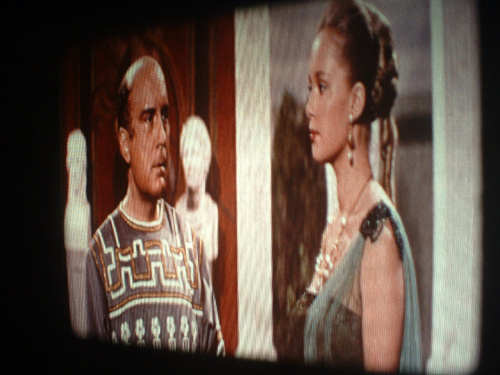
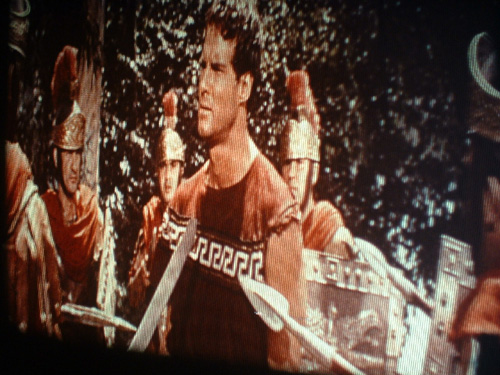

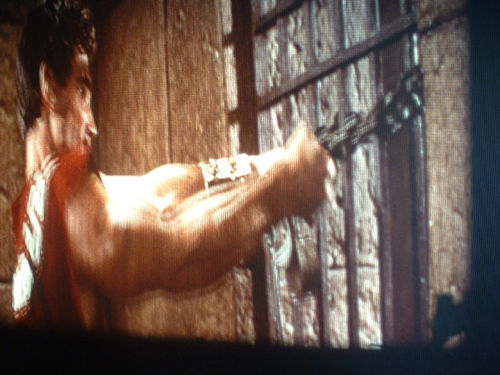
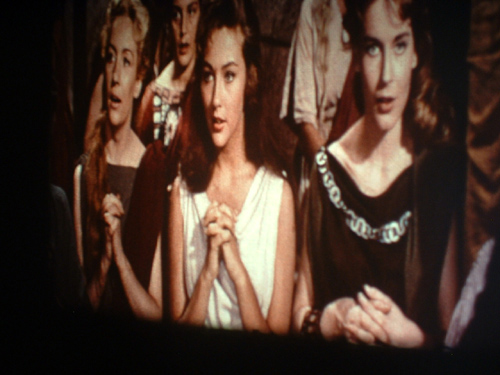
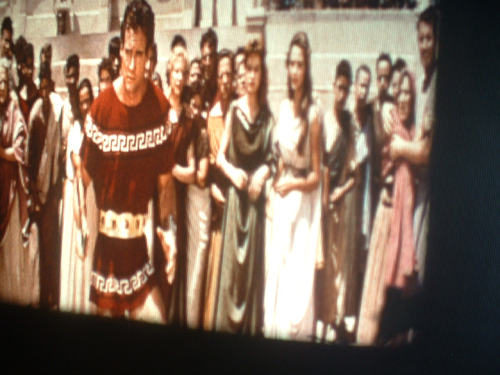

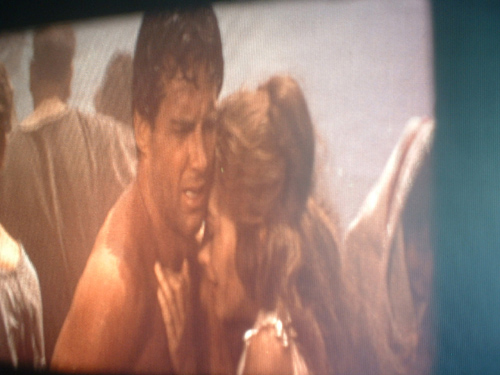
[ October 10, 2013, 12:36 AM: Message edited by: Laksmi Breathwaite ]
--------------------
" Faster then a speeding bullet, more powerful then a Locomotive "."Look up in the sky it's a bird it's a plane it's SUPERMAN"
| IP: Logged
|
|
Osi Osgood
Film God

Posts: 10204
From: Mountian Home, ID.
Registered: Jul 2005
|
 posted October 10, 2013 12:33 PM
posted October 10, 2013 12:33 PM




I originally bought this print as I was hoping to move into 16MM, but the deal for the projector fell through and I ended up selling this print to you, Laksmi, and I'm glad I did! You obviously enjoy it!
It looks to be an ex-theatrical print, as these scope 16MM's were often made for the lower gauge movie theaters, but it has obviously help up well, with very good color.
It's always hard to tell with these prints though, as these sandal and sword epics tend to have a very brownish, earthy color spectrum to begin with. I remember looking at the individual frames of this and it was pin sharp and quite lovely.
By the way, I was surprised to learn that the one and only Sergio Leone, (before his western epics) was director, and that alone would put this film above the standard sandal epic.
You are a most happy man, and thank U for the review!
--------------------
"All these moments will be lost in time, just like ... tears, in the rain. "
| IP: Logged
|
|
|



 UBBFriend: Email this page to someone!
UBBFriend: Email this page to someone!
 Printer-friendly view of this topic
Printer-friendly view of this topic



 UBBFriend: Email this page to someone!
UBBFriend: Email this page to someone!
 Printer-friendly view of this topic
Printer-friendly view of this topic